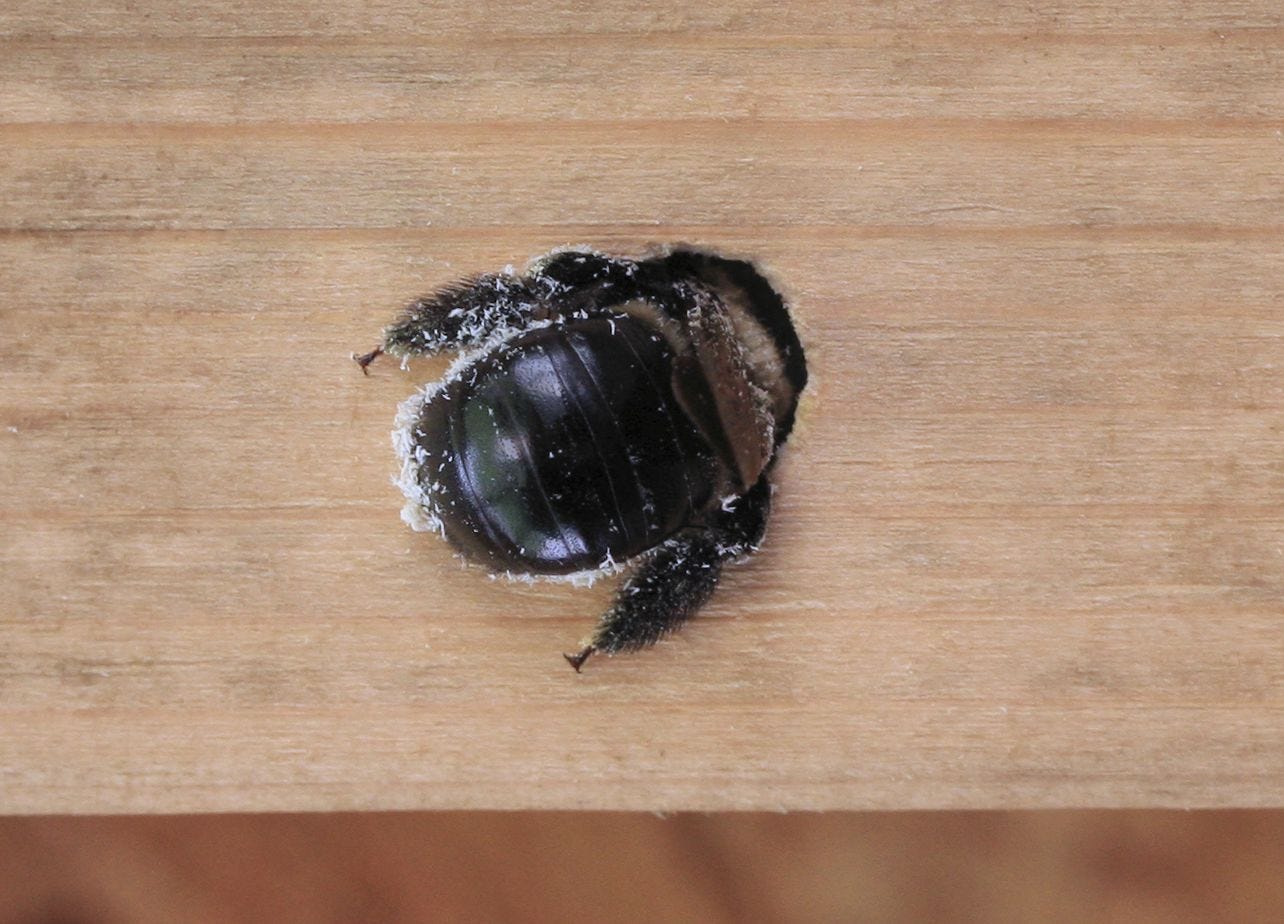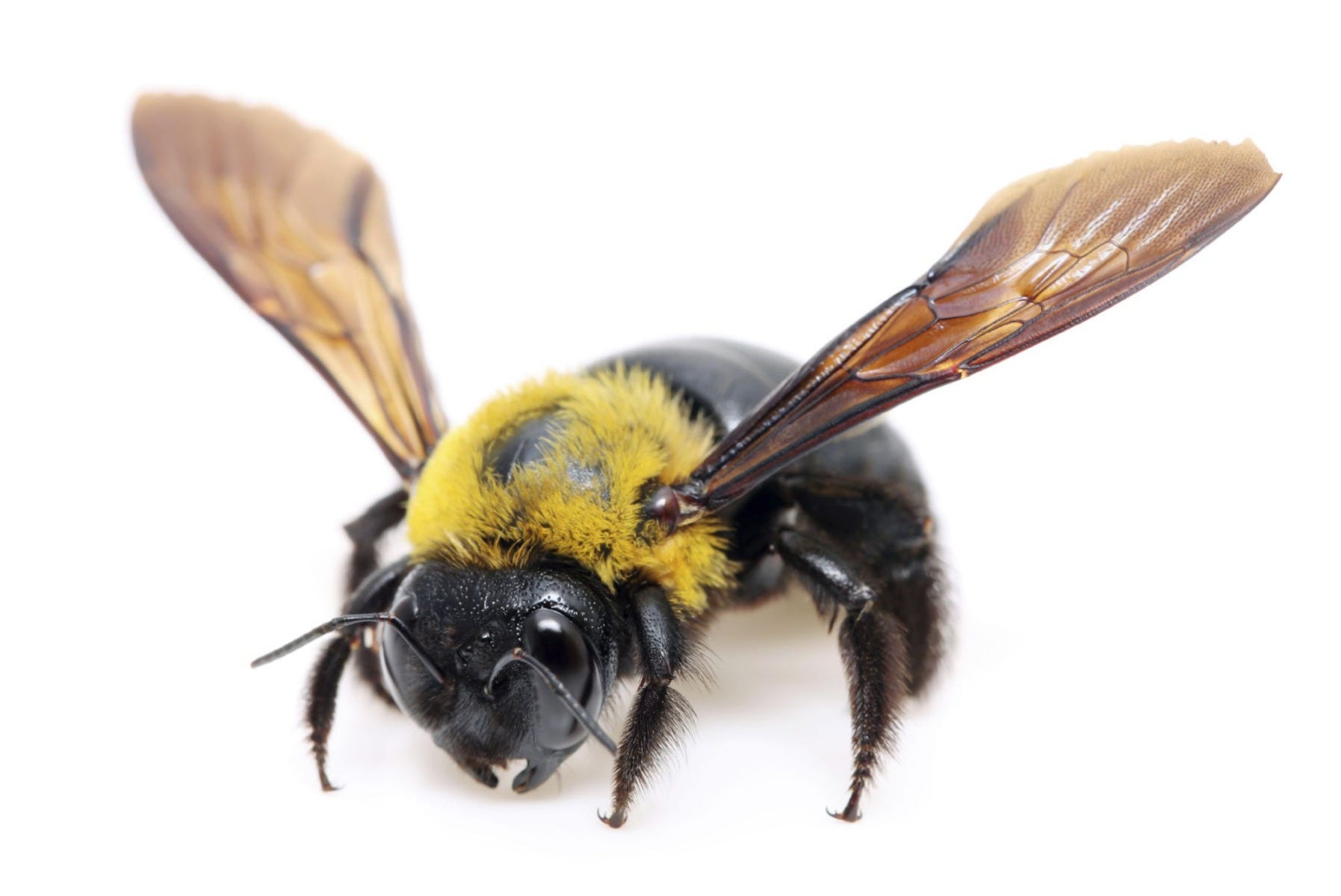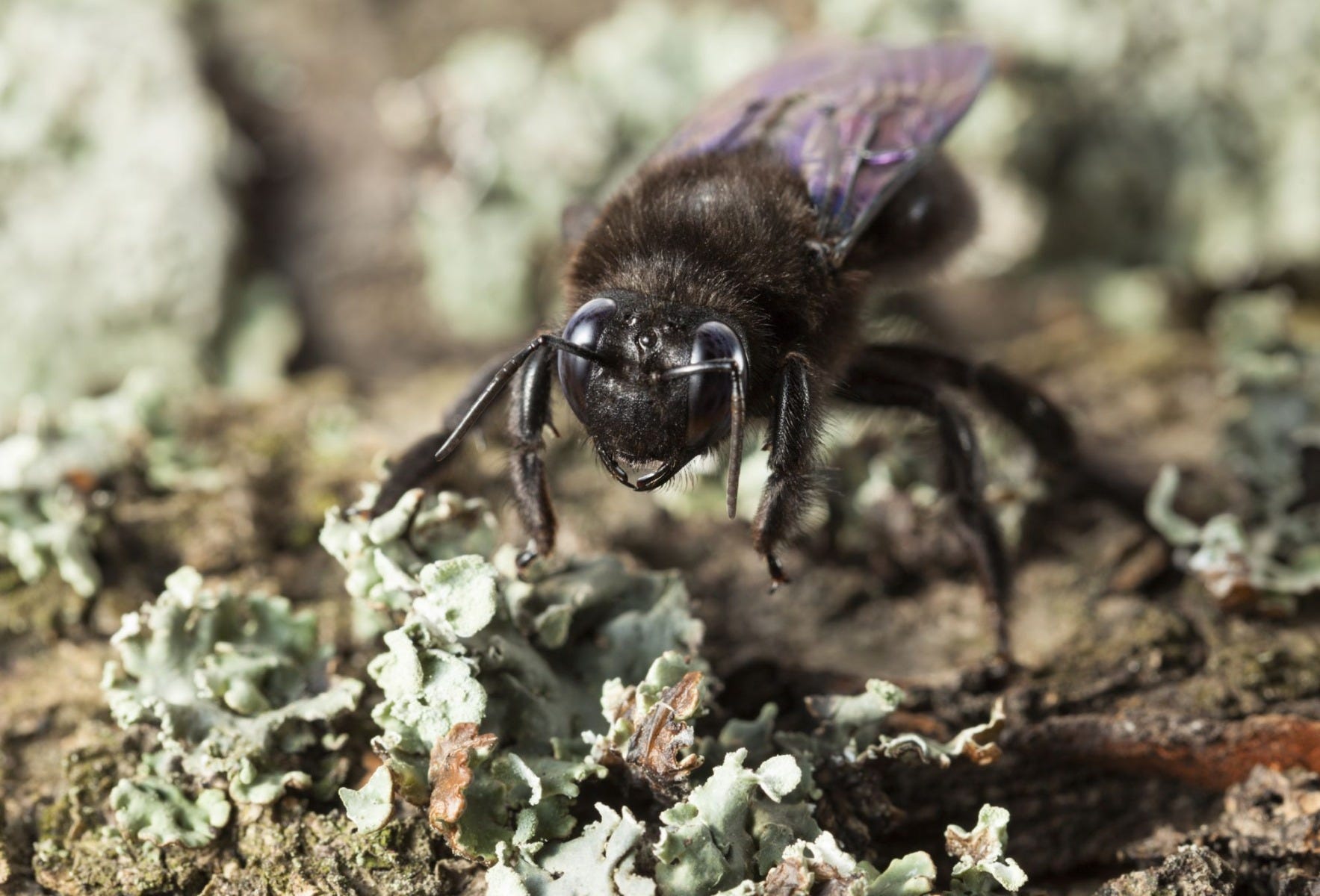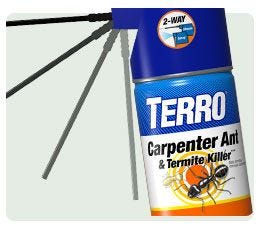Common Wasp and Hornet Species: Carpenter Bee

Any homeowner knows the nuisance of coming across a bee nest when cleaning the gutters. Perhaps named after the very handyman they take after, the wood-warping carpenter bee has the ability to drill through wood with nature’s original power tool, the jaw.
But don’t let these insects be a buzz kill. Opposed to the bees’ reputation as stinging machines, these insects are in fact gentle giants and only sting upon handling. But, one thing’s for sure - these bees can be just as unnerving as they are inconvenient to work around.
Appearance
Along with bumblebee queens, carpenter bees are the largest native bee species in the United States. Chances are, you’ve seen them around. Here are a few pointers to help you make the distinction:

- Three white stripes on end of body
- Large, measuring up to ¾ inches in length
- Workers covered in hair; queen is hairless
- Signature white and black coloring (as opposed to yellow jackets with yellow and black pattern)
Habitat
If you see carpenter bees buzzing around the roof and eaves of your home, you can bet they’re living and nesting along the perimeter of your house. And it might not stop there. The carpenter bee habitat can extend into lawn furniture, fence posts, windows, shutters and under siding. You’ll be able to locate the entrance to a bee nest by its nearly perfectly round circular hole, about a half inch in diameter.
Is your veggie garden swarming with bees? While the symbiotic relationship between bees and flowers is essential for an ecosystem, you’ll want to be aware which plants tend to attract bees. Carpenter bees gravitate toward crops they can pollenate, like eggplants, tomato plants and other vegetables and flowers.
Also, carpenter bees favor soft and decaying wood for nesting grounds. Check your property for some of the carpenter bee’s ideal tree turf, including yellow pine, white pine, California redwood, cedar, Douglas fir, mimosa, fir, mulberry, ash and pecan.

Geography
Widespread across the country, the carpenter bee is found in a diverse range of habitats, from tropical and subtropical, to temperate climates. You’ll see this species swarming from Florida to Arizona in the south and as far north as New York.
Reproduction
When you’re dealing with this species, there’s a bit more to the reproductive lifecycle than just “the birds and the bees”. In fact, carpenter bees are elaborate woodworkers when it comes to carving out a safe and viable nest. Once a female is fertilized in the spring, she cuts into a grain, carving just an inch deep, using her strong jaws.
Next, she makes a 90-degree turn and burrows into the wood for about 4-6 inches to create a space called a gallery. This is where she builds the nest and collects nectar and pollen, the future food sources for carpenter bee larva. Who knew a bee could be so industrious!
Once the egg has been laid, she’ll seal off the wood hole and let nature do its work. The larva will develop for about 5 to 6 weeks, and reach adulthood during the summer and fall!
Diet
Carpenter bees are early morning foragers. They live off pollen and nectar. Because of their size, they cannot enter long, tubular plants like the flowers of yellowbells, so they become “nectar robbers” and steal nectar by cutting a slit at the base of the flower and skip the process of pollination.
Control Options

So, how to control carpenter bees? It’s easy with TERRO® Carpenter Ant & Termite Killer. This powerful aerosol spray kills on contact and provides long-lasting residual control for up to four weeks. Use the two-way precision tube to directly spray into voids and infested wood where carpenter bees are drilling holes and building nests.
There are also other steps you can take to prevent bees from nesting around your home. Cover all exposed, unpainted and weathered wood with polyurethane or oil-based paint. For the future, avoid building with wood materials and choose alternatives like vinyl, where possible.
